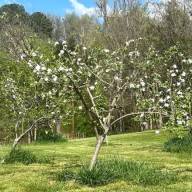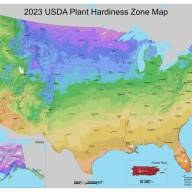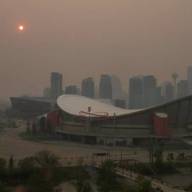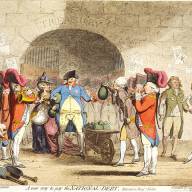You’ve undoubtedly heard the expression, Timing is Everything. And, perhaps you’re familiar with phenology. Phenology is derived from the Greek words phainein and logos, the former of which means to show and the latter of which means word, or knowledge.
Phenology refers to timing, especially of natural phenomena such as seasonal changes.
Phenology is usually used to describe variability in timing, such as variation in emergence, bud break, flowering, and fruiting of plants.
A former Ph.D. advisee of mine was the inaugural director of the National Phenology Network in the United States. A second Ph.D. advisee of mine is the second and current director of this program. This program is among the largest citizen science programs in the world. It relies upon the observations of many people throughout the country to document ongoing changes in plant life. As you can probably imagine, many of these changes result from abrupt climate change.
A renowned example of phenology is offered by Henry David Thoreau. A famous early naturalist in the United States, Thoreau kept detailed records of plant flowering dates in Concord, Massachusetts from 1852 until 1858. Richard B. Primack and Abraham J. Miller-Rushing took advantage of Thoreau’s records by collecting similar data in the same area about 150 years later. Primack and Miller-Rushing also discovered similar data collected during an intermediate period by botanist Alfred Hosmer and stored at the Concord Free Public Library. These three sets of data provided the basis for a peer-reviewed, open-access paper in the renowned journal BioScience on 1 February 2012.
Figure 2 from the paper in BioScience tells a compelling story regarding the average first flowering dates of 43 common plant species. Years are shown on the horizontal axis, and the average first flowering date is shown on the vertical access. The figure clearly illustrates the earlier flowering of plants over time.
Figure 3 from the paper in BioScience provides supporting information concerning climate change. Again, years are shown on the horizontal access. This time, the average April temperature is shown on the vertical axis. This figure clearly illustrates increased warming over time, with the final year available at the time—2010—representing the warmest April on record.
Not surprisingly, Primack and Miller-Rushing were unable to locate many of the species. In addition, as they wrote in the paper in BioScience, “many species that had formerly been common in Concord were now reduced to a single population, sometimes with just a few individuals, or were no longer present in Concord at all. In the end, we concluded that 27% of the species that Thoreau and other botanists had recorded from Concord were no longer present, and a further 36% of formerly common species were now rare (Primack RB et al. 2009b). Many of these rare species existed only in small populations—in some cases, only a few individuals, or even just one plant—and so were in imminent danger of local extinction. This great loss and decline of species was somewhat surprising, considering that approximately 35% of Concord's land area is protected and another 27% remains undeveloped.”
Another change described in the peer-reviewed paper in BioScience is “the increasing prominence of nonnative plant species. In Thoreau's time, 79% of the Concord flora was native species, but this figure has declined to 61% today … (p = .002; Primack RB et al. 2009b). This change in the flora is likely to continue because of the continuing effects of habitat fragmentation, air pollution, and other human impacts that contribute to the spread of nonnative species. Most of the new species that have arrived in Concord over the past 150 years are nonnative species, and most of the species that have increased in abundance are nonnative species as well. These changes appear to be related to climate change: Further analysis has shown that the nonnative species had flowering dates that were more highly correlated with spring temperatures than were those of the native species (p < .001; Willis et al. 2010). Furthermore, the species that were independently classified as invasive had the most flexible flowering dates of all and had shifted their flowering dates to a point earlier in the spring, more so than had the native plants or the noninvasive nonnative plants (p = .01; Willis et al. 2010). One of the most aggressive invasive species—the purple loosestrife (Lythrum salicaria)—shifted its flowering date by several weeks. In contrast, the flowering dates of many other species, such as most native lilies and orchids, did not shift. Again, the explanation for the success of such species may be their ability to leaf out earlier in warm years and outcompete less-flexible native species (Sola and Ehrlén 2007, Xu et al. 2007). Other plant traits, such as habit (e.g., herb, woody), height at maturity, leaf mass per area, seed weight, and pollination syndrome (e.g., insect, wind), did not differ significantly between native and nonnative plants in Concord (p > .05).”
Phenology is an important, seldom-considered attribute of organisms. It can be used to evaluate the impacts of climate change and many other phenomena. Fortunately, past and ongoing research demonstrates the importance of phenology as a research approach. I suspect we will be seeing the results of many more research projects in the years ahead.
Author
"Dr. Guy McPherson is an internationally recognized speaker, award-winning scientist, and the world’s leading authority on abrupt climate change leading to near-term human extinction. He is professor emeritus at the University of Arizona, where he taught and conducted research for twenty years. His published works include 14 books and hundreds of scholarly articles. Dr. McPherson has been featured on TV and radio and in several documentary films. He is a blogger, cultural critic, and co-host of his own radio show “Nature Bats Last.” Dr. McPherson speaks to general audiences across the globe, and to scientists, students, educators, and not-for-profit and business leaders who seek their best available options when confronting Earth’s cataclysmic changes." source


















